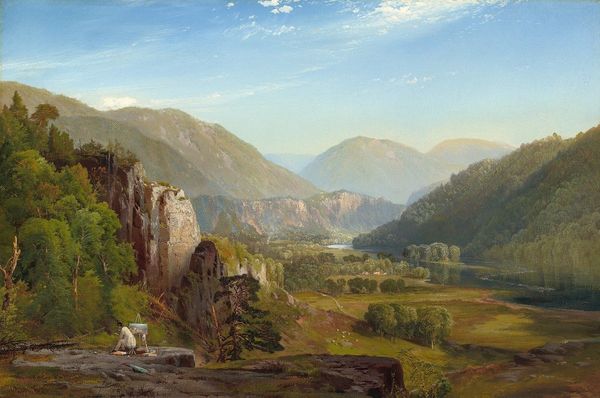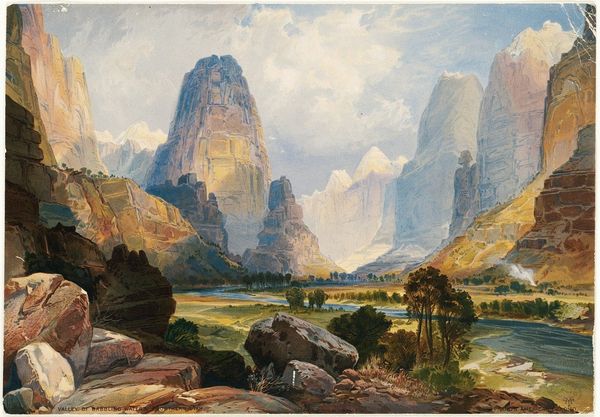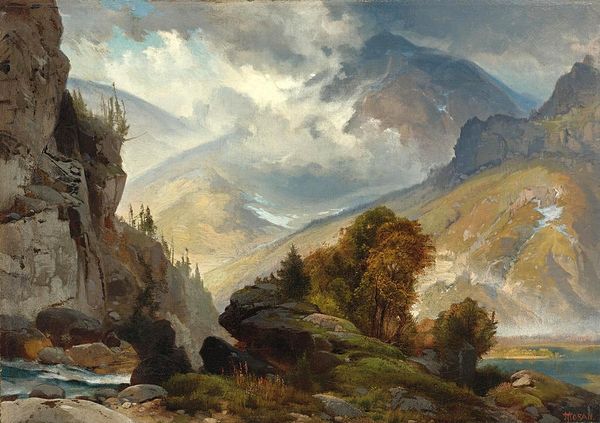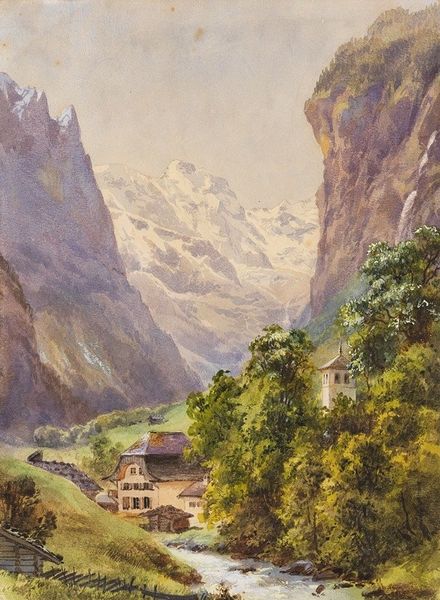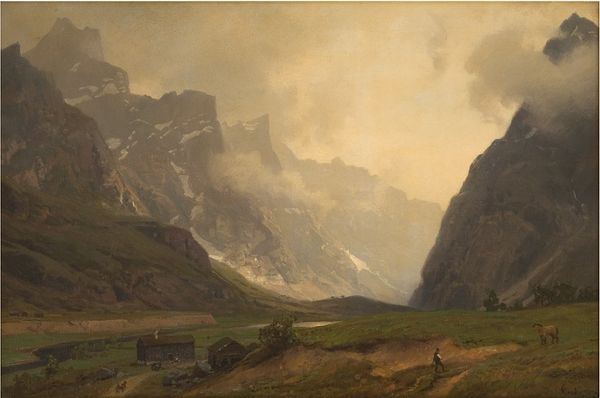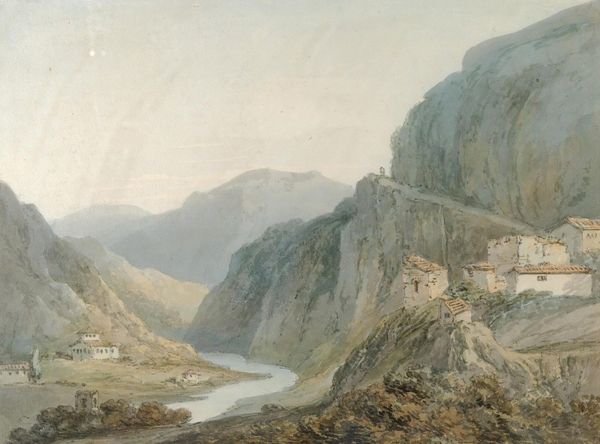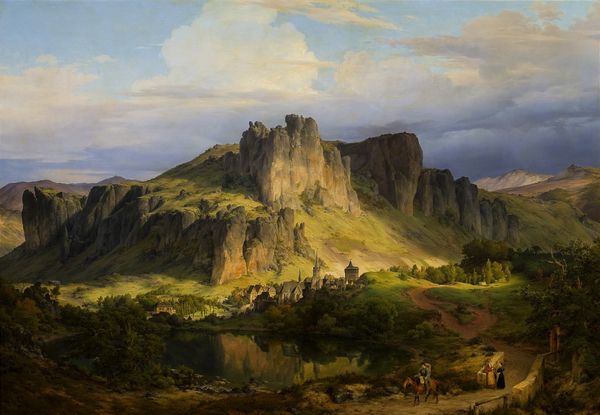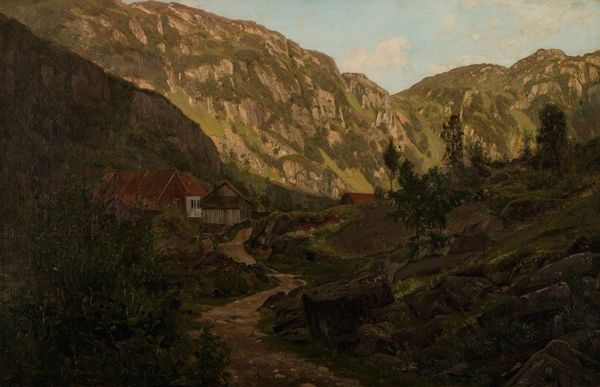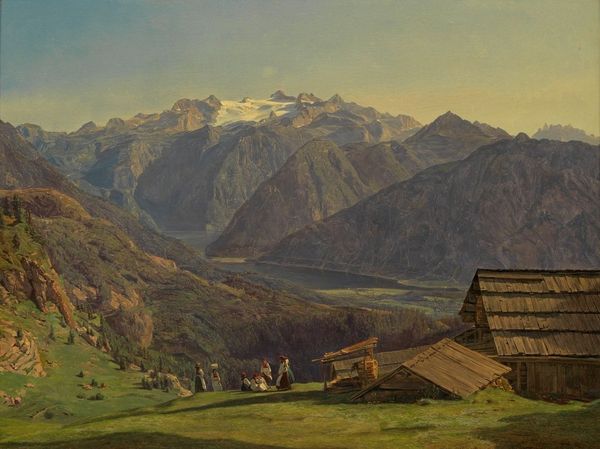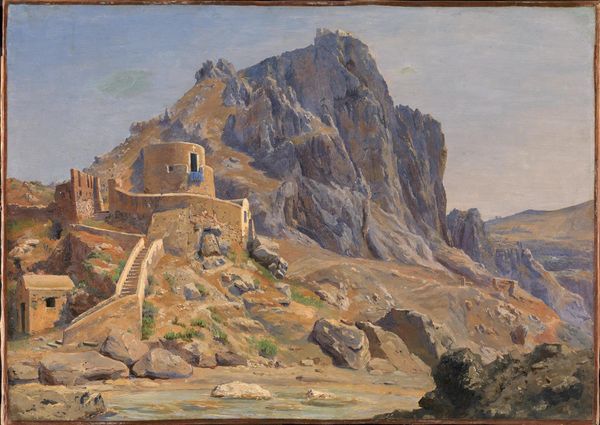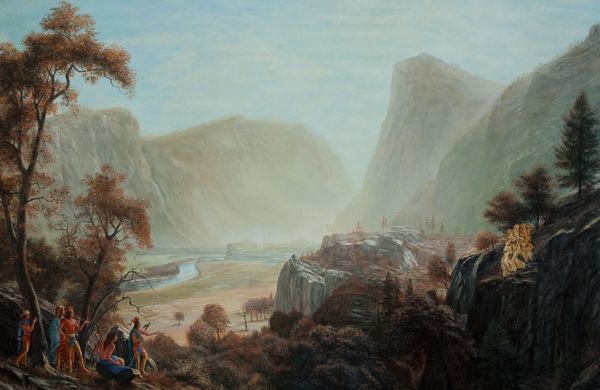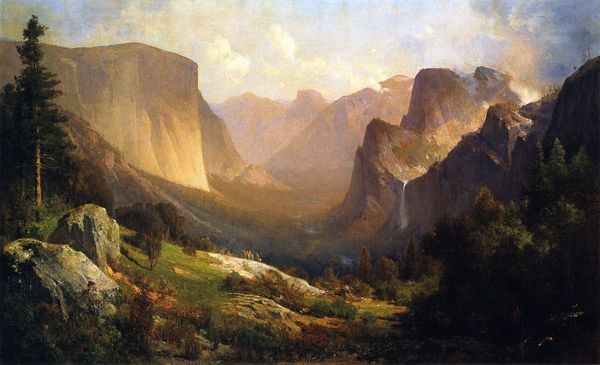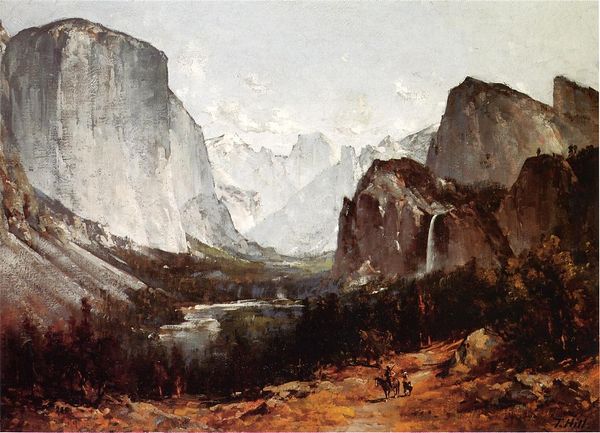
plein-air, oil-paint
#
plein-air
#
oil-paint
#
landscape
#
oil painting
#
romanticism
#
realism
Dimensions: 26.5 x 32.5 cm
Copyright: Public domain
Curator: Johan Christian Dahl painted "View of Nærøy Valley" in 1847. The landscape is vast, painted in oil on canvas. What strikes you most when you look at this? Editor: The sheer density of the material. It feels very grounded, from the gritty path in the foreground to the towering mountains in the distance. There's a heaviness to it, an almost tactile quality in the way the paint conveys stone and wood. Curator: Dahl was deeply interested in representing the sublime power of nature. During his time, art served this kind of social purpose to create new perspectives of experiencing nature as deeply beautiful, not just scary and menacing. It served as a kind of stage to play this encounter for urban dwellers and the establishment who bought his works. Editor: Yes, but let's not forget that it’s also an artistic performance. I see his skillful use of layering and texture. Look at the cottages. Dahl is evoking a rustic setting while subtly reminding us of the human labor embedded within the natural landscape, the physical effort to establish such a structure against the elements. The people crossing the bridge appear almost as an afterthought, showing who can partake of these aesthetic commodities. Curator: I understand your points on craft and materiality. It does make me consider how these Romantic landscapes also reinforced ideas about national identity. Dahl presents Norway as a land of powerful, untamed beauty, connecting its people with a unique sense of place during a period of nationalistic fervor. The image becomes a stage for identity. Editor: Precisely, a carefully constructed representation designed for specific audiences and social function, meant to reflect labor, cultural consumption, and even social hierarchies embedded in this wilderness experience. The medium carries all of these nuances together. Curator: Absolutely. Dahl's painting invites viewers into this space. It reminds us of both the powerful aesthetic and how imagery is used to shape these kind of landscape commodities, still shaping contemporary museum policies. Editor: Indeed. I am glad to reflect on the dense, interwoven narratives of art, nature, and social reality represented here.
Comments
No comments
Be the first to comment and join the conversation on the ultimate creative platform.
